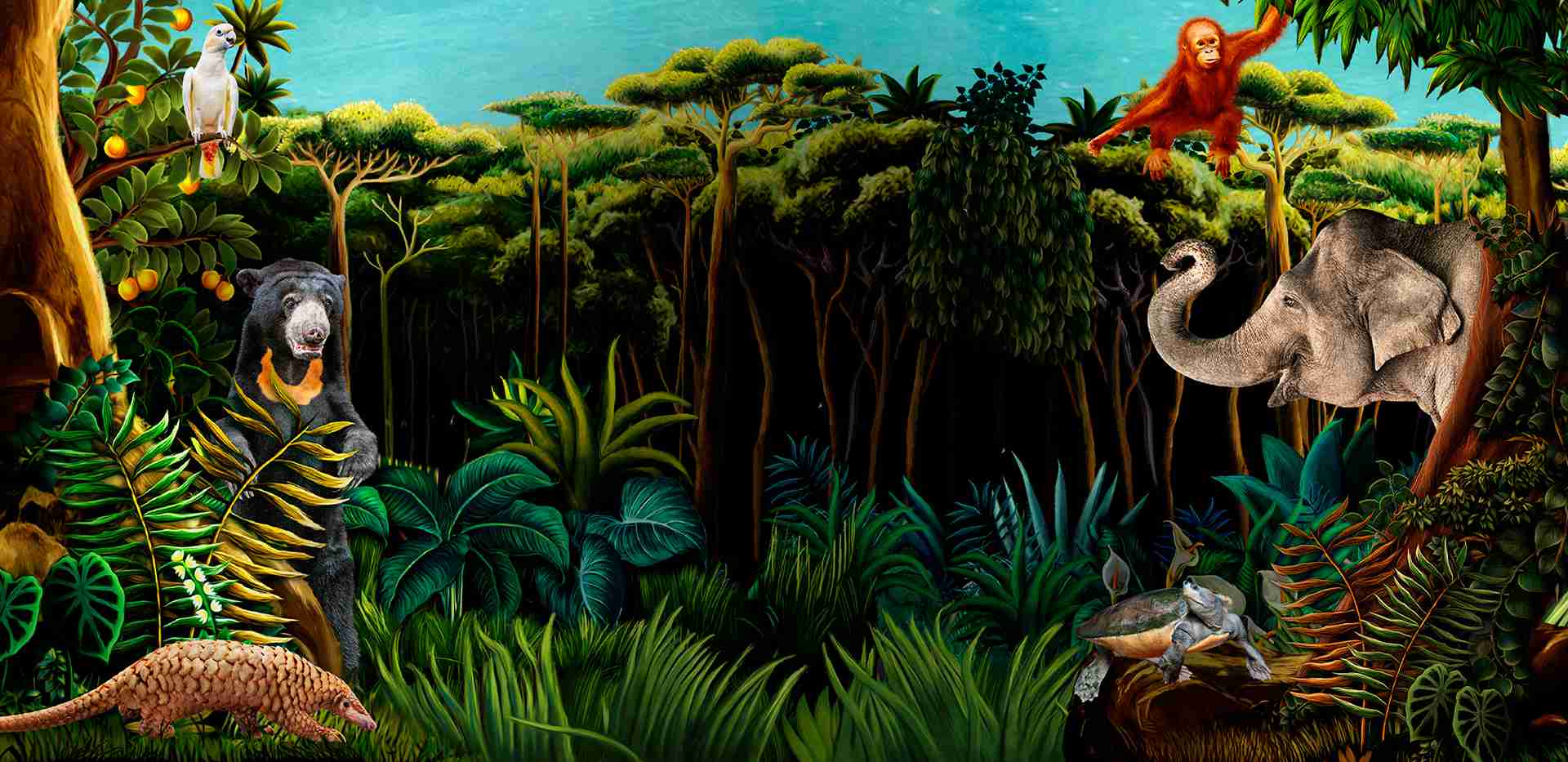Jurong Bird Park inks Wildlife Loan Agreement with the Philippines for a pair of critically endangered Philippine Eagles
20 May 2019A pair of one of the world’s rarest raptors, the Philippine Eagle, will make Singapore its home this year.
A Wildlife Loan Agreement for the two eagles was inked today, between Jurong Bird Park and the Philippines’ Department of Environment and Natural Resources, represented by Dr Cheng Wen-Haur, Deputy CEO and Chief Life Sciences Officer from Wildlife Reserves Singapore (WRS) and Secretary Roy Cimatu, respectively.

A pair of one of the world’s rarest raptors, the Philippine Eagle, will make Singapore its home this year following the inking of a Wildlife Loan Agreement between Jurong Bird Park and the Philippines’ Department of Environment and Natural Resources, represented by Dr Cheng Wen-Haur, Deputy CEO and Chief Life Sciences Officer from Wildlife Reserves Singapore and Secretary Roy Cimatu, respectively.
PHOTO CREDITS: WILDLIFE RESERVES SINGAPORE

The arrival of a pair of Philippine Eagles in Singapore will mark 50 years of friendship between Singapore and the Philippines. Ambassadors from both countres were present at the signing ceremony to mark the diplomatic anniversary. From left: His Excellency Gerard Ho, Ambassador of Singapore to the Philippines, Dr Cheng Wen-Haur, Deputy CEO and Chief Life Sciences Officer from Wildlife Reserves Singapore, Secretary Roy Cimatu, Philippines’ Department of Environment and Natural Resources, and His Excellency Joseph Del Mar Yap, Ambassador of the Philippines to Singapore
PHOTO CREDITS: WILDLIFE RESERVES SINGAPORE
His Excellency Joseph Del Mar Yap, Ambassador of the Philippines to Singapore and his counterpart, His Excellency Gerard Ho, Ambassador of Singapore to the Philippines were also present at the signing ceremony to mark the diplomatic anniversary, with close to 200 guests in attendance. The eagles are due to arrive in Singapore next month from Davao City, where the Philippine Eagles Foundation is based.
The Philippine Eagle is critically endangered, with only about 400 surviving in the wild. The pair, coming to Singapore on a renewable 10-year conservation breeding loan, will act as conservation ambassadors to raise awareness about the threats they face in the wild as a result of habitat loss and hunting. Their arrival will mark the first time a breeding pair is established outside of the Philippines as part of a recovery plan for this species.
“The Philippine eagle is the crown jewel of Philippine biodiversity and an integral part of our rich heritage. As our national bird, it embodies our aspiration to soar high as a nation”, said Roy Cimatu, Secretary, Department of Environment and Natural Resources in the Philippines. “As a critically-endangered species, it is an ideal ambassador of Philippine biodiversity, perfect for the purpose of generating awareness on the urgent need for conservation, and for stimulating international support for an in-situ conservation programme.”
The pair of eagles was carefully selected to be the best genetic match and comes with breeding recommendations. After they arrive, they will spend the next few months settling in before keepers start the introduction process. Under the Wildlife Loan Agreement, future offspring will be returned to the Philippines, and the chicks will contribute to the species’ genetic health of the population under human care. The male eagle, Geothermica, is 15 years old, while Sambisig, the female, is 16. Both Geothermica and Sambisig were hatched under human care at the Philippine Eagle Foundation.
Dr Cheng Wen-Haur, Deputy CEO and Chief Life Sciences Officer, WRS said:
“We are honoured by the trust that the Philippine Government has placed in us to care for the country’s national bird. As a conservation-minded wildlife organisation, there is a strong synergy between our focus on protecting animals—particularly threatened Southeast Asian species—and the Philippine Eagle Foundation’s mission to promote the survival of a truly majestic raptor and the biodiversity it represents. Together, we can actively contribute in a greater capacity to raise awareness of the threats that the wild cousins of these Eagles face in the wild, even as we continue the work of breeding to fight extinction.”
Jurong Bird Park started preparations earlier this year, and the eagles’ caretakers spent time with the Philippine Eagle Foundation and local keepers there to learn the specific husbandry and veterinary care needed for the majestic raptors. The eagles will arrive in Singapore accompanied by two staff from the Philippine Eagle Foundation as well as Jurong Bird Park’s Deputy Head Keeper Peter Teo. The birds will be cared for by a team who collectively possesses over 15 years of avicultural experience. The same team is currently responsible for the world’s largest collection of Southeast Asian hornbills in the park, with 11 Southeast Asian species out of 18 represented in the park as part of several managed breeding programmes.
WRS supports over 30 wildlife conservation projects through funding and capacity-building initiatives. Most of these projects focus on Southeast Asian species that are under threat from habitat loss, and the illegal wildlife trade. WRS is also an active member and hosts the IUCN Asian Species Action Partnership (ASAP), an alliance of conservation organisations which focuses emergency conservation attention on critically endangered land and freshwater vertebrates in Southeast Asia. The Philippine Eagle is an ASAP species, pushed to the brink of extinction by habitat loss and hunting, and the Philippine Eagle Foundation is a fellow member of ASAP.

The pair of eagles was carefully selected to be the best genetic match and comes with breeding recommendations. The male eagle, Geothermica (pictured left), is 15 years old, while Sambisig, the female, is 16. Both Geothermica and Sambisig were hatched under human care at the Philippine Eagle Foundation.
PHOTO CREDITS: PHILIPPINE EAGLE FOUNDATION

